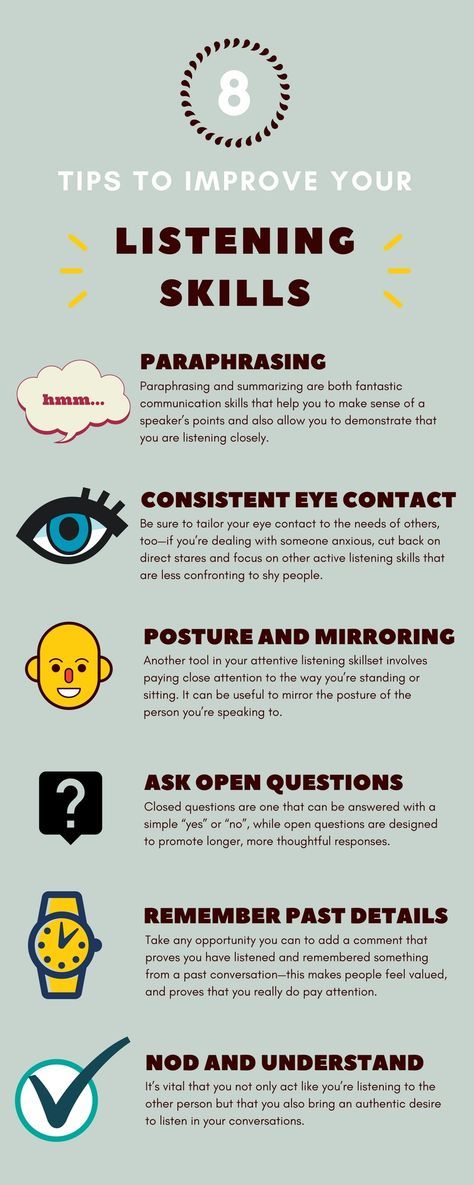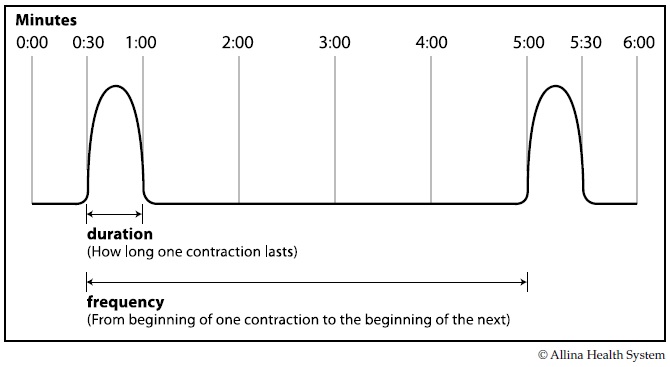How to communicate effectively with your child
How to communicate effectively with your young child
Every interaction you have with your child is a form of communication. It's not just about the words you say: The tone of your voice, the look in your eyes and the hugs and kisses you give – all convey messages to your child. The way you communicate with your child not only teaches them how to communicate with others, it shapes their emotional development and how they build relationships later in life.
What are the types of communication?
Communication can take two forms: verbal and nonverbal.
Verbal communication is the way we communicate with words and includes:
- Pitch and tone of voice
- The words you say
- Dialect, or using words your child can best understand.
Nonverbal communication is both intentional and unintentional communication through body language. It includes things like:
- Facial expressions
- Eye contact
- Personal space
- Hand gestures
- Physical touch like a hug
Try these nine tips to practice your verbal and nonverbal communication skills:
1.
Listening actively helps children to feel heard and understood. By using gestures such as encouraging smiles and affirming nods you can show that you are engaged with what your child is saying and really care. Getting down to the same eye level as your child as they speak to you can help them feel safer and more connected to you.
Show that you are listening intently to what they have to say by asking them questions like “what?” “why?” and “how?”. This also helps your child to improve their own communication skills by teaching them how to tell a story and what details to include.
2. Reflective listening
A great way to show your child that you are paying attention and care about what they have to say is by acting like a mirror. Repeat back what they say to you using different words. For example, if your child says, “I’m not playing with Marco anymore,” you could respond with, “You are not playing with your friend?”. This leaves room for your child to express their emotions without judgment. You might be surprised at how much they have to say!
You might be surprised at how much they have to say!
3. Speaking clearly
Use language that is understandable for your child and appropriate to their age. Be clear, specific and do not use derogatory words. Using kind language helps set a positive example for your children. Remember, the conversation should make your little one feel respected and loved.
4. Avoiding bribes
Offering rewards such as candy for basic behaviours may feel like they give you short-term control, but they do not allow you to develop clear boundaries and can lead to distrust between you and your child. Try to set clear and realistic expectations about what you would like your child to do, praise good behaviour when you see it, and use calm consequences to encourage better behaviour when needed.
> Read: How to discipline your child the smart and healthy way
5. Explaining feelings
To help your child develop emotional intelligence, it is important for them to learn how to name their feelings. When your child is expressing their feelings verbally, listen to what they have to say with empathy and without judgment. Consider what life looks like through their eyes. If your little one is expressing their feelings in a nonverbal way – for example through a temper tantrum or laughing and having fun doing an activity they enjoy – help them put words to how they feel, such as happy, sad, relaxed, hurt, scared, hungry, proud, sleepy, angry, helpless, irritated, embarrassed or joyful.
When your child is expressing their feelings verbally, listen to what they have to say with empathy and without judgment. Consider what life looks like through their eyes. If your little one is expressing their feelings in a nonverbal way – for example through a temper tantrum or laughing and having fun doing an activity they enjoy – help them put words to how they feel, such as happy, sad, relaxed, hurt, scared, hungry, proud, sleepy, angry, helpless, irritated, embarrassed or joyful.
6. Using ‘noticing’ statements
When you praise your child for specific actions, it helps them to feel good about themselves and lets them know what behaviours you like. Instead of saying “good job!” try being more specific with a ‘noticing statement’: “I noticed that you put all of your toys away after playtime. Nice work!”
7. Having fun together
As your children grow, parenting can seem like a more serious task. That’s why it is all the more important to have fun together and enjoy lighthearted conversation – it’s a great way to strengthen your relationship! Find ways to relate to your child by saying something positive about something they care about, paying attention to their interests and joking together.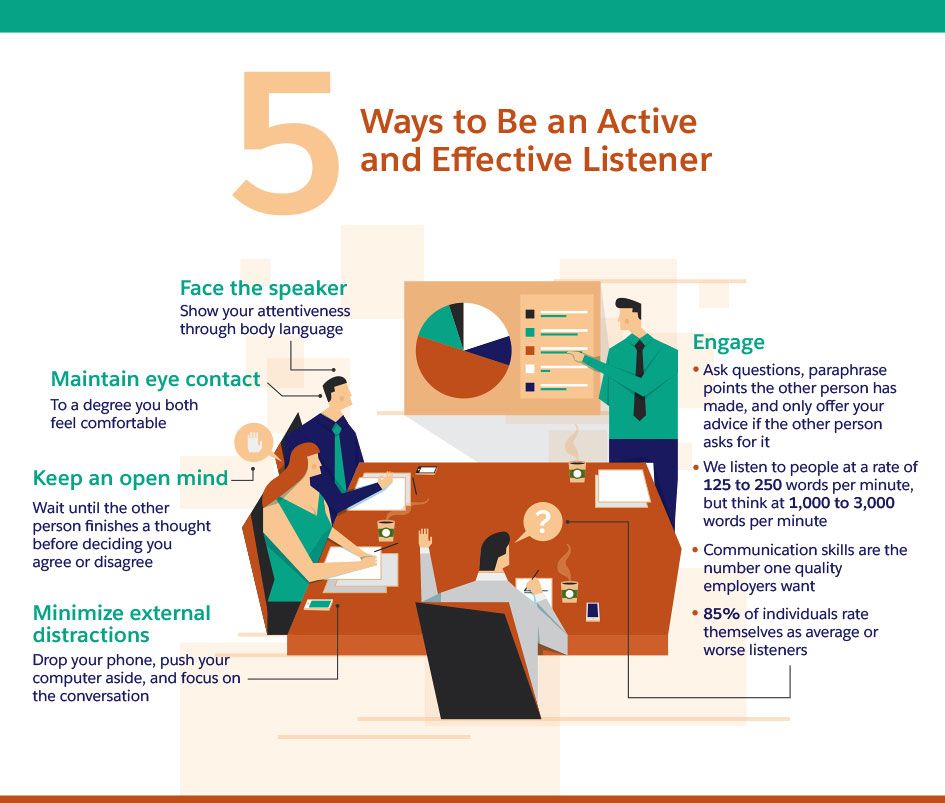 Remember, laugh with your child but never at your child.
Remember, laugh with your child but never at your child.
8. Focusing on behaviour
If you are upset with your child about something, make sure that your criticism and comments are directed at their behaviour and not at them as a person. For example, instead of “I don’t like that you are messy” try “I don’t like it when you leave your clothes all over the floor.”
9. Leading by example
Consider what example you are setting. Parents are children’s introduction to the world. What your child sees you do is as important as what they hear you say.
Only make a promise to your child that you are sure you can keep. This helps to build and maintain trust between you and your children.
Remember, leading with kindness and love is always the way to go when bonding and communicating with your child!
7 Tips For Effective Communication With Your School-aged Child
Gary Gilles is a Licensed Clinical Professional Counselor in private practice for over 20 years.He is also an adjunct faculty member at the University ...Read More
Talking with your child is a daily event. But, let’s face it, as parents we are busy and it is easier to keep the conversation with our children light so we can move on to the next thing on our “to-do” list. There’s a place for light conversation in daily life but there are also those times when your child needs for you to tune in and listen more deeply.
Your child won’t tell you this but he or she needs for you to probe into their inner life on occasion to find out what they are thinking and feeling. Not only will this help them and you make more sense of their emotions but it will also strengthen your relationship with them. They will intuitively sense that you understand them better because you took the time and energy to really care.
Here are seven tips to help you skillfully tune-in during those times when you child needs your full attention.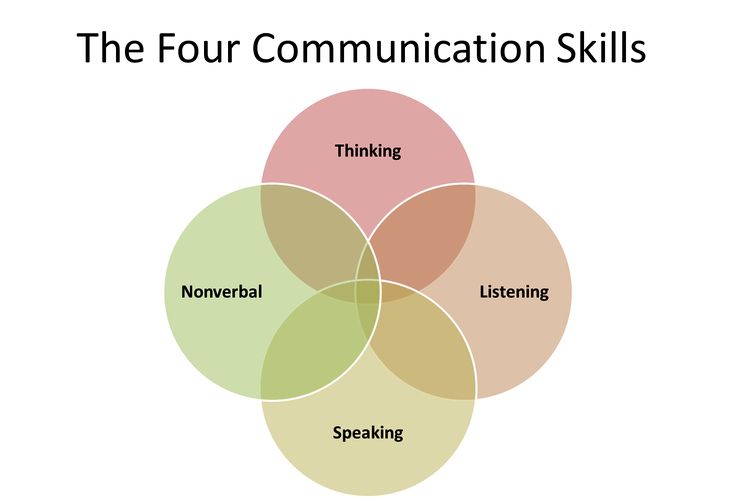
1. Listen with your whole body. When you sense that your child needs to talk, give them your full attention. Face them, make eye contact, kneel down to get on your child’s level if necessary – even tilt your head – to show that you are really listening.
Explore Your Options Today
2. Pick up on the emotion. When your child has noticeable emotion in their words or in their body language, attend to that feeling. It’s often useful to make an observation or restate what you hear them say. This sends the message that you are taking them and their feelings seriously. For example, you might say, “You’re upset because I’m not letting you go outside to play after its dark?” These reflective statements then allow your child to respond by affirming or clarifying what they are feeling and it will usually prompt more conversation.
3. Acknowledge your child’s feelings. Empathy is one of the most powerful and comforting responses we can give to another person, especially a child.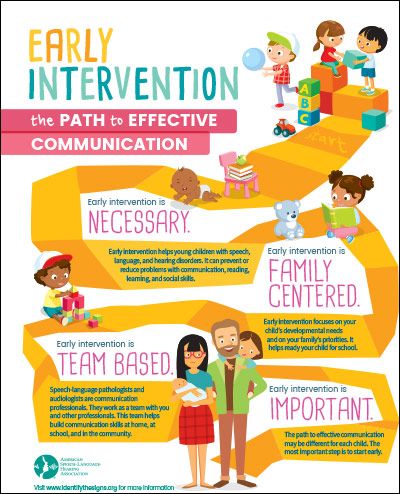 When you acknowledge those feelings, you validate them. This includes those feelings we often think of as “negative,” such as anger, frustration and disappointment. Often, acknowledgement of their feelings is all the child needs to begin dealing with the problem at hand. When you validate a child’s emotion you sensitize them to that emotion and give them permission to feel it and also acknowledge it in other people.
When you acknowledge those feelings, you validate them. This includes those feelings we often think of as “negative,” such as anger, frustration and disappointment. Often, acknowledgement of their feelings is all the child needs to begin dealing with the problem at hand. When you validate a child’s emotion you sensitize them to that emotion and give them permission to feel it and also acknowledge it in other people.
4. Delay correction and gather more information. When your child is countering you, resist the urge to correct them immediately, even if you think they’re wrong. Hear them out before responding. Better yet, go an extra step by asking your child follow-up questions to learn more about why they see things as they do. This approach acknowledges your child’s feelings and gets them talking. You are likely to get more cooperation when you are willing to hear their concerns versus simply correcting them.
5. Try to see the situation through your child’s eyes.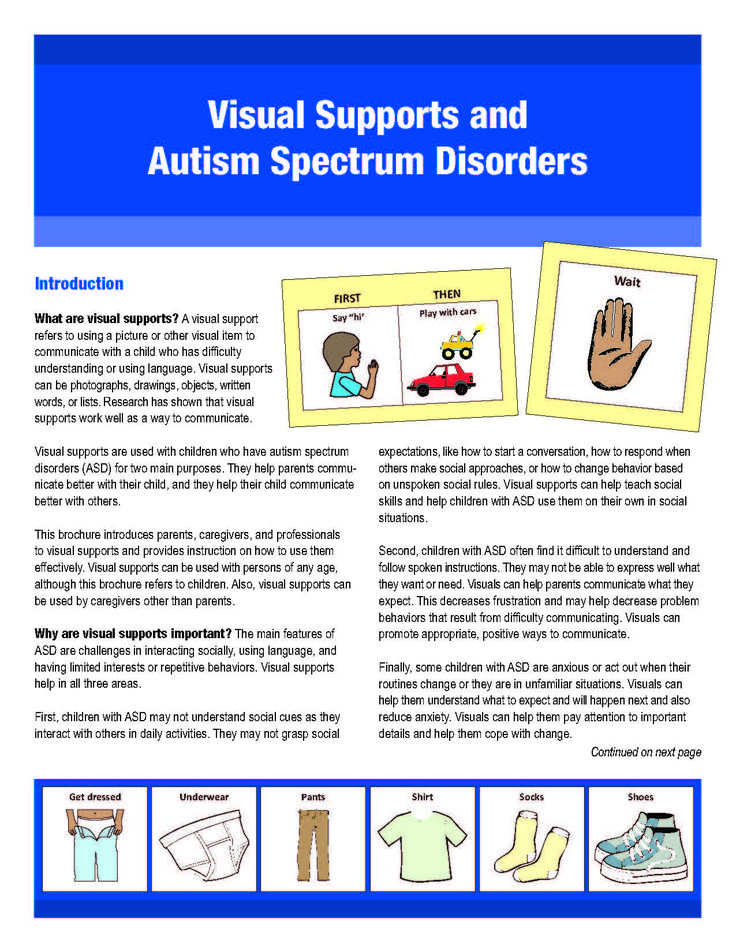 Try to step into your child’s frame of reference before reacting. We often expect our children to understand adult-like ways of thinking and we don’t give consideration to how they might be thinking or viewing the situation. What developmental needs might they have in that moment that they can’t directly identify or ask for? For example, as you and your spouse are leaving the house for a much-needed night out, your child has an emotional meltdown in front of the babysitter because they don’t want you to leave. You could get upset, ignore your child’s behavior, or you could ask yourself: What is my child trying to say right now; what need might they have that I should be attentive to? For example, is their upset behavior a plea for comfort, security, reassurance, or something else that you don’t understand? When you can see that certain behaviors are connected to their developmental needs, it is easier to be rational and patient with an appropriate intervention.
Try to step into your child’s frame of reference before reacting. We often expect our children to understand adult-like ways of thinking and we don’t give consideration to how they might be thinking or viewing the situation. What developmental needs might they have in that moment that they can’t directly identify or ask for? For example, as you and your spouse are leaving the house for a much-needed night out, your child has an emotional meltdown in front of the babysitter because they don’t want you to leave. You could get upset, ignore your child’s behavior, or you could ask yourself: What is my child trying to say right now; what need might they have that I should be attentive to? For example, is their upset behavior a plea for comfort, security, reassurance, or something else that you don’t understand? When you can see that certain behaviors are connected to their developmental needs, it is easier to be rational and patient with an appropriate intervention.
6.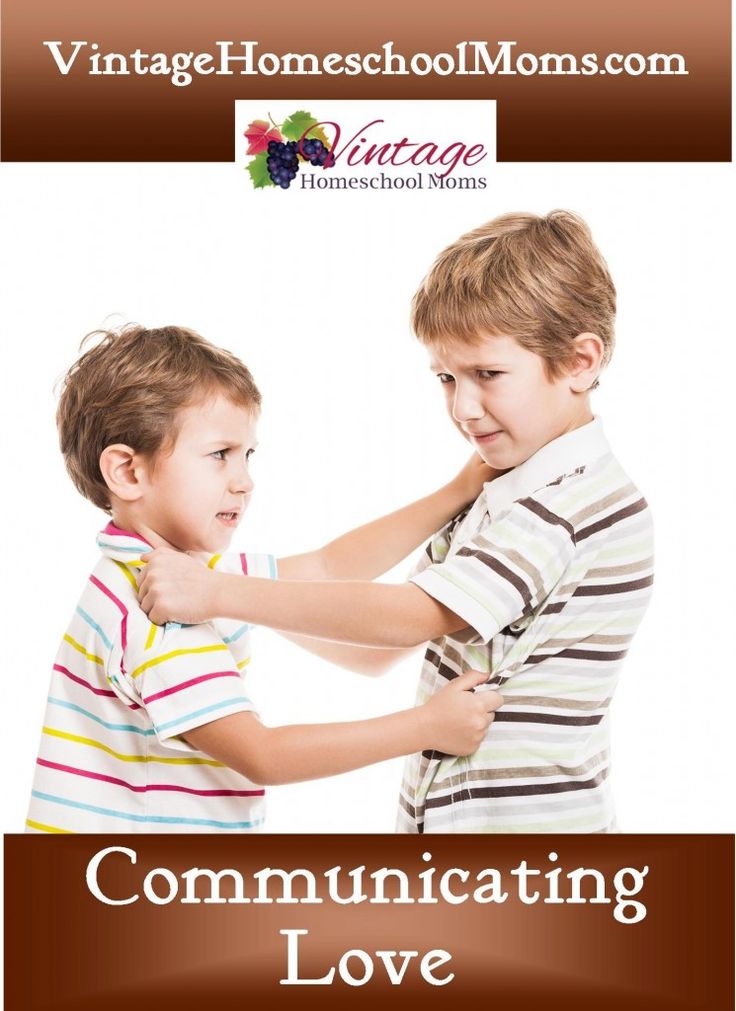 Avoid shaming your child; rather focus on behavior. Shaming a child diminishes their worth. For example, a 10-year-old boy knocks over his milk at dinner for the third time this week and his father explodes in anger saying, “You idiot, can’t you be more careful?” Over time, these instances of shame make the child feel defective. A better approach is to focus on the behavior. Given the same situation, the father could say, “It’s okay. Let’s get a towel to clean it up; it’s just a mistake. Please ask for others to pass items to you at the table instead of reaching, okay?” A child doesn’t know how to correct being defective but he can learn to correct his behavior if given instruction in a supportive and encouraging way.
Avoid shaming your child; rather focus on behavior. Shaming a child diminishes their worth. For example, a 10-year-old boy knocks over his milk at dinner for the third time this week and his father explodes in anger saying, “You idiot, can’t you be more careful?” Over time, these instances of shame make the child feel defective. A better approach is to focus on the behavior. Given the same situation, the father could say, “It’s okay. Let’s get a towel to clean it up; it’s just a mistake. Please ask for others to pass items to you at the table instead of reaching, okay?” A child doesn’t know how to correct being defective but he can learn to correct his behavior if given instruction in a supportive and encouraging way.
7. Encourage your child to think proactively about solutions. When faced with a decision that you and your child disagree on, ask your child what he wants to happen or would like to change. This helps them see that there are options to every problem.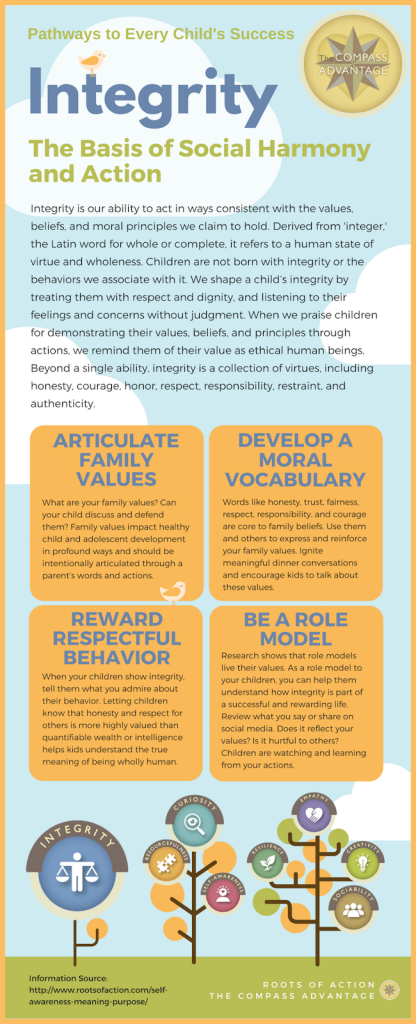 If they can come up with a reasonable approach to a problem, let them try it. When we encourage our children to become part of the solution, they often have greater motivation for resolving it.
If they can come up with a reasonable approach to a problem, let them try it. When we encourage our children to become part of the solution, they often have greater motivation for resolving it.
Keep Reading By Author Gary Gilles, LCPC
Read In Order Of Posting
How to communicate with children: active listening techniques
Content
- Active listening techniques
- Self-messages
- Mirroring
Modern parents want to communicate with the child as a person and build a trusting, respectful relationship. At the same time, the adult remains the main one: he is responsible for the little person and for the relationship with him. How to properly communicate with children so that they listen, hear and do?
Psychological techniques, many of which are already well known, will help mothers and fathers: active listening, I-messages, mirroring, paraphrasing, summarizing.
Rules for creating a context in which these methods will work:
- Maintain a friendly attitude, show respect.
 Imagine that you are communicating not with a silly child, but with a potential entrepreneur, scientist, artist ... See a future adult in a child, and it will be much more difficult to raise your voice, shout, ironize, put pressure, because in a situation with an adult this will lead to conflict.
Imagine that you are communicating not with a silly child, but with a potential entrepreneur, scientist, artist ... See a future adult in a child, and it will be much more difficult to raise your voice, shout, ironize, put pressure, because in a situation with an adult this will lead to conflict. - Accept children for their strengths and weaknesses. Imagine how you would feel if a husband, partner or girlfriend rudely or mockingly, in front of everyone, would criticize you. Put yourself in the place of a child, and this will help you stop and choose your words and intonation more carefully.
- Let the little man speak. Don't interrupt, even if you think he's saying something funny or stupid.
- Satisfy the need for contact with you, fill communication with positive emotions during the day and it will be easier for children to open up to you.
Active listening techniques
To calm down, it is enough for children to be listened to. Therefore, listening involves the child speaking and you listening without interrupting.
Therefore, listening involves the child speaking and you listening without interrupting.
What does active mean? This means that you are included: you are not just listening, but also hearing and responding to the story. First of all, a small person reads emotions and body signals, which is why your position and posture are so important.
If you are sincerely interested in what children are saying and experiencing, the body will do its job and they will understand that you are included.
At the same time, active listening is a skill that can be trained, so observe yourself to see if you are sending these signals and start using them consciously:
- so that your eyes are at the same level;
- nod or tilt your head slightly to one side;
- If the child is ready for physical contact, sit him on his knees, hug, stroke, hold his hand or just lightly touch. But don't push if you feel reluctance or resistance. It's best to just sit next to each other at a comfortable distance.

What not to do:
- turn away from the person you are talking to, mind your own business, watch TV or talk on the phone;
- sit or stand in a closed position, cross your legs or arms over your chest;
- physically dominate: "hang" over the speaker, put his hands on his belt or on his hips.
At the level of emotions and speech, there are several basic techniques:
1. Pauses: make them in order to help the child concentrate, and also to show that you are listening to him carefully.
2. Acknowledgment, encouragement, encouragement.
3. Interjections (yes, aha, uh-huh, and) and short lines (“really”, “and then”, “well”).
4. Paraphrasing - retelling what you heard in your own words. Its purpose is to make sure that you understand the person correctly, and also to let him understand this.
Phrases can be used:
- In other words, you mean…
- Do you think that.
 ..
.. - How I understood you…
In addition, clarifying phrases and questions can be used:
- What do you mean when you say…
- If I understand you correctly…
Try to use more affirmative sentences instead of questions. They give a feeling of greater empathy and encourage to tell more. If you are wrong, the child will correct you.
5. Reflection of feelings, empathy:
- I think you are now feeling...
- It looks like you are offended
- You must be very angry...
Together with the designation of the feeling, you can repeat the phrase of the child in his own words or in similar words:
- I did not find my toy.
- Didn't find a toy? You must be very upset.
6. Summarizing is summing up the conversation, when the main thoughts and, possibly, agreements are voiced:
- This is what happened.
 ..
.. - Now I understand what happened...
- Let's think about what can be done in this situation
- Let's agree that if...
One of the obstacles to the successful use of active listening is our patterned reactions and responses.
Psychologists have identified twelve types (you can read more about them in Yu. B. Gippenreiter):
- Orders, commands. "I said stop!" "Pick up here!" "Live to sleep!"
- Warnings, warnings, threats. “If you don’t stop being capricious, I won’t give you candy!”, “Do it again and get it!”
- Morals, morals, sermons. “You need to share with other guys!”, “Your elders must be respected.”
- Tips, ready-made solutions. “I wouldn't wear it if I were you. Take that T-shirt."
- Evidence, logical arguments, notations, lectures: "You are no longer small, you must understand that it is not good to do this."
- Criticism, reprimands, accusations.
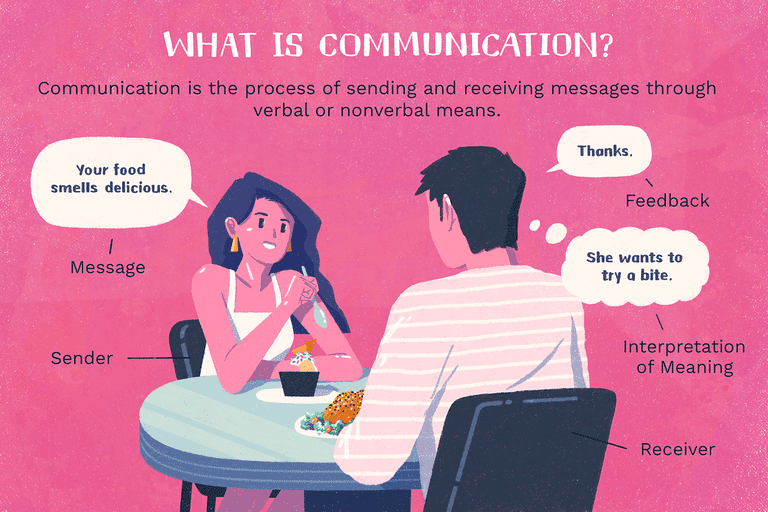 “There is absolutely no conscience, do they do that”, “All because of you!”.
“There is absolutely no conscience, do they do that”, “All because of you!”. - Praise. "That's right, that's right." "Well done!"
- Name calling, ridicule. "Greedy-beef", "Oh, you razin".
- Guesses, interpretations. “Probably got a deuce again.”
- Questioning, investigation. "What's the matter, why are you silent?"
- Persuasions, exhortations, sympathy in words. “I found something to be upset about, it’s nothing.”
- Joking, avoiding conversation. "Let's talk later sometime."
Active listening skills help not only in communicating with a child, but also with any adult. There is a good expression: “It's amazing how different people can be. Some do not hear what you say, while others hear what you think. Active listening will put you in the second category.
Read more about the rules, techniques and results of this method in the books by Yulia Borisovna Gippenreiter “The Miracles of Active Listening” and “Communicate with a Child. How?".
How?".
I-messages
Another principle of constructive communication is I-messages. These first-person statements use the pronouns "I", "me", "me", "mine". They reflect the opinion and feelings of the speaker, while you-statements contain an assessment of the other and his behavior and provoke reciprocal aggression and resentment.
Using I-statements, you create a space of respect, keep a distance between the speakers. If a child sees your sincere expression of feelings, he will get to know you better and it will be easier for him to express his feelings.
In any conflict situation, speak primarily about your feelings and vision of the situation, and not about the behavior of another:
- “I don’t like it when I have to repeat my request” instead of “How many times you have to repeat, do it immediately!”
- "I'm tired and I want to be quiet" instead of "Will you stop making noise or not!".
- "How I like it when the table is clean and tidy" instead of "What a pig you are!".

Mirroring
The next way is mirroring. In psychology, this is the name for copying gestures, postures, words of the interlocutor in order to arouse his disposition and sympathy. This is an opportunity to show the child verbally and non-verbally that you understand him, empathize with him.
This mechanism begins its work in infancy. For a newborn, a mother is a mirror: she answers a smile with a smile, frowns, clicks or cooes in response.
Surely you have noticed how funny babies copy their parents' manner of speaking, walking, tilting their heads or straightening their hair. It is important to remember that they are not doing this to mimic or make us laugh. For kids, this is a way to become their own, master the world of feelings and learn to understand what others are experiencing.
Imitation and imitation are possible thanks to mirror neurons and are the key to empathy and empathy. Children most often imitate unconsciously, but adults, on the contrary, can use the mirroring method in relationships consciously to tune in to the same wavelength with children.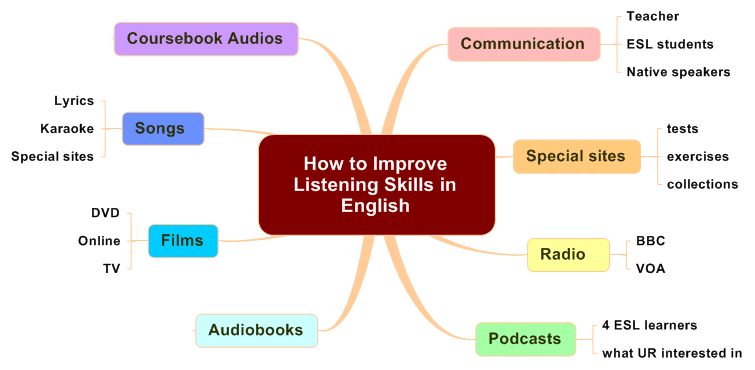 When your baby feels accepted, he relaxes, opens up, and responds better to your words and actions.
When your baby feels accepted, he relaxes, opens up, and responds better to your words and actions.
Mirroring can be used on one or more levels.
At body level:
- Repeat the body position of the interlocutor (for example, sit opposite him on the floor in the same position).
- Repeat some of his movements, gestures, facial expressions (perhaps occasionally scratch your nose, shrug your shoulders or sigh). Do this not immediately, but slowly and with an interval.
- Follow his breath.
At the level of emotions and speech:
- Speak with the same speed, rhythm, intonation.
- Join in and express the same emotions.
Avoid mimicking children. Make sure that your behavior does not look fake and / or like a mockery. This will surely offend and anger the baby, and most likely, he will close. Conscious mirroring should be imperceptible and look natural.
Having created an atmosphere of understanding and closeness, you can slowly change the course of communication in the right direction: the young interlocutor will now begin to mirror you and it will be easier to reach agreement.
By the way, a simple acting exercise (in form, but not in essence and execution), which can be turned into a useful fun game with a baby, is called “Mirror”. Stand opposite each other. Have one of you show some movement. The task of the second is to repeat it as accurately as possible.
One variation of this exercise: move with your palms together. And although it seems simple, quickly and accurately repeat the movements after another without losing hand contact, it will only work if you relax, trust the other and follow him!
This article lists only a few ways to communicate effectively. But even using them will help you improve mutual understanding and make relationships closer. At the same time, children will learn to distinguish their own emotions, name them, and therefore, manage them in the future and use them correctly in communication with others.
Anastasia Kuznetsova - child psychologist, Montessori teacher AMI, expert of our online course for parents "Development and upbringing of a child from 1 to 3 years old"
Photo Oksana Pavshishchik
Free lessons from experts
will help to take the first step in creating a development space for your child at home
9000
How to communicate with a child
Today we are talking about the book “Communicate with a child. How? ”, The author is a professor of the psychology faculty of Moscow State University, a brilliant teacher and psychologist Yulia Borisovna Gippenreiter. This is one of her most popular books, and there are many others that are just as useful. “Communicate with the child. How?" - First of all, a guide to their own emotional maturity.
How? ”, The author is a professor of the psychology faculty of Moscow State University, a brilliant teacher and psychologist Yulia Borisovna Gippenreiter. This is one of her most popular books, and there are many others that are just as useful. “Communicate with the child. How?" - First of all, a guide to their own emotional maturity.
This is a story about how to be a good adult: with children, colleagues, employees, clients and family members. She helped I'm ten years older.
Unconditional acceptance
The first rule of communication between a parent and a child is to accept him as he is, without conditions or requirements. Child must live with the feeling that he is in any case loved, desired, valuable and dear, even if he entered wrong.
The wrong approach is conditional love based on the behavior of the child. When a child thinks he is bad and unloved because of his actions. Raising a child is not training. You can't just punish bad people here.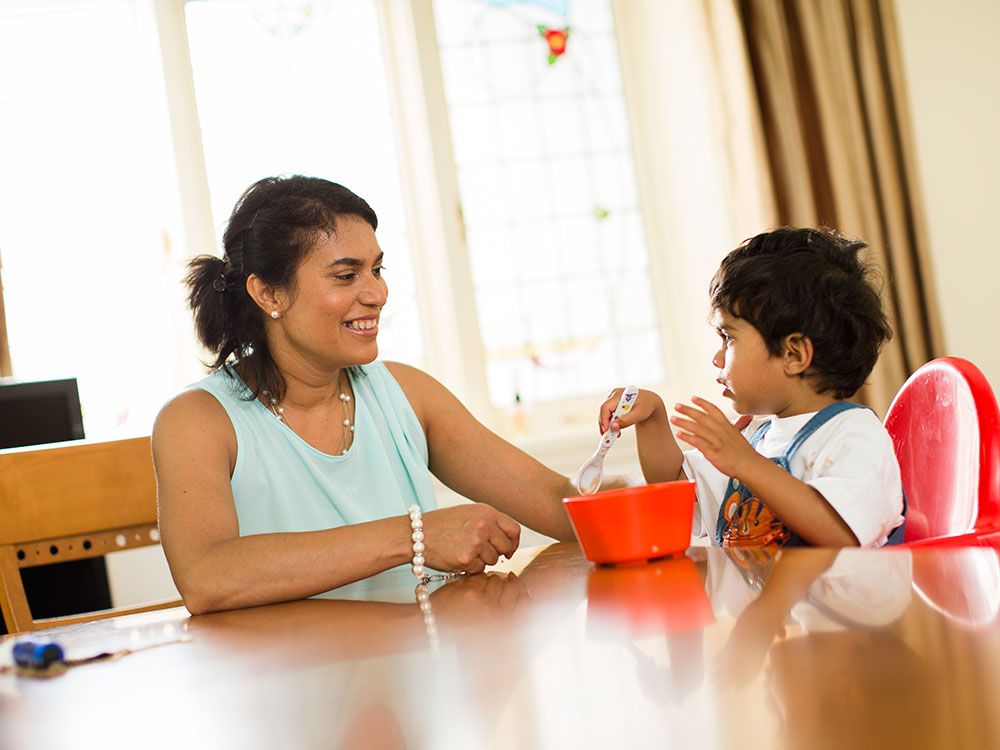 behavior and encourage good. In any situation, the child should feel loved.
behavior and encourage good. In any situation, the child should feel loved.
The child needs a constant message from a loved one: “When you are near, I feel good; I'm glad to see you; you to me like it." Conditional love destroys this emotional feed. This is the emotional foundation of a relationship. When there is unconditional love and confidence in each other, then it's easier.
Dissatisfaction
At the same time, it is possible and necessary to express dissatisfaction - but not by the child himself, but by his specific actions. Not "you're bad" and "you did badly", and even better "I feel bad about what you did." The last one is the "I-message": it says about your feelings and does not evaluate the child himself. The child has a chance to independently make a conclusion about his behavior and correct it:
I feel ashamed when people turn their heads at us in the store
I am very tired and I am sad that now I have to wash the dishes
I find it difficult to talk when interrupted
NOT "YOU'RE BAD", AND "I AM BAD FROM WHAT YOU DID."
Active listening
Perhaps the main technique that parents should learn is active listening in difficult situations: when the child is sad, difficult or ill. The purpose of the technique is to let the child understand that in difficult times they hear him, to his the problem is not indifferent, it is understood. You will be surprised how often a child lacks just this, and how much can change if it appears.
To actively listen, you need to “return” to the child what he says, indicating feelings child:
— I don't want to do my homework!
- You are uncomfortable studying Russian
— No, there are just too many!
- Are you afraid not to be in time tomorrow
Looks strange at first. I just want to shout, advise, point out, joke or regret instead child. But these are phrases from the adult world, stimulating phrases, phrases of influence.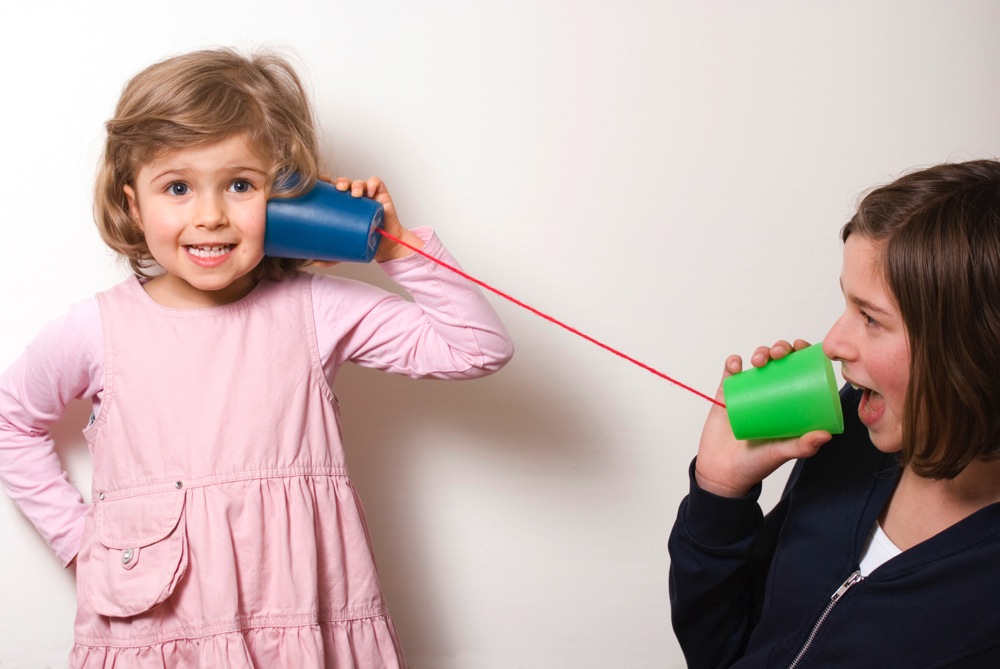 A child in a difficult situation does not need stimulants: he probably already knows what to do. If he needed help, he would ask for help. He is looking for emotional support.
A child in a difficult situation does not need stimulants: he probably already knows what to do. If he needed help, he would ask for help. He is looking for emotional support.
Active listening helps to get to the root of the problem. The child willingly makes contact when he understands that his hear. The tension is relieved, the child feels understood, and together you easily solve the problem.
What not to do in difficult times
a minute does not lead to anything good:
Orders (“Quickly got out!”, “So that I don’t hear this again!”) - cause the child to feel that the parents do not respect his independence and do not want to delve into the problem.
Threats and warnings (“If you don’t stop, I’ll leave”) are useless, when a child has an unpleasant experience. They just push him further into a corner.
Moral teachings (“Adults must be respected”) do not work in words, because the child learns values and rules from the behavior of parents, and not from edification in difficult times.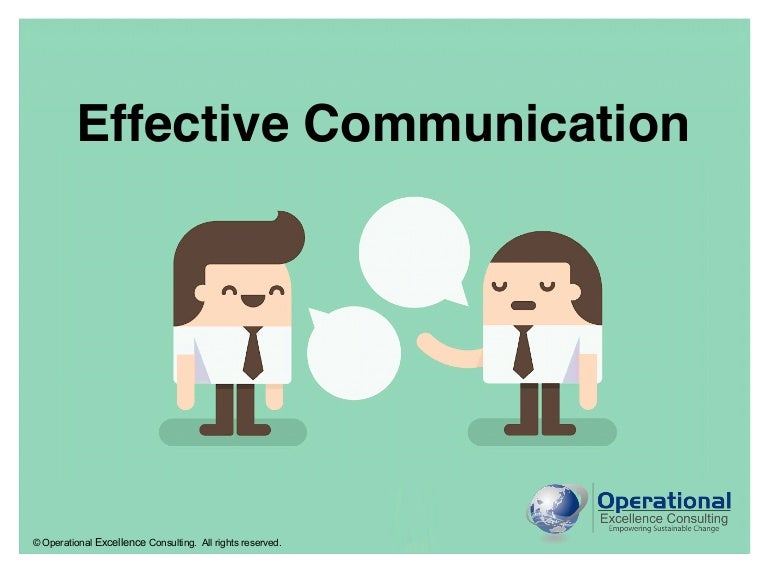 And if the child breaks the rules, then either he repeats after someone from home, or openly protests. And protest is the result of emotional stress.
And if the child breaks the rules, then either he repeats after someone from home, or openly protests. And protest is the result of emotional stress.
Tips (“Try like this...”) — put the parent over the child and show him how inexperienced and stupid he is. If the child does not seek advice himself, it is better to keep your wisdom until the child is ready for it. Often, by the way, the child comes to everything on his own.
Logical reasoning (“You are not reading the assignment carefully, so make mistakes") - they work great in proving the theorem, and in no way bring the child closer to emotional stability. At best, the child ceases to perceive such words.
Criticism ("It's all because of you") - especially from close people - this is the way to low self-esteem, defensive reactions, depression, self-disappointment.
Praise does not apply to the child's emotions. The child understands that if he is praised here, he may be praised somewhere else. to condemn - because in principle it is evaluated. It is important not to switch to praise-evaluation, remaining in the zone praise-support. Instead of "You did well" say "I'm glad you did it."
The child understands that if he is praised here, he may be praised somewhere else. to condemn - because in principle it is evaluated. It is important not to switch to praise-evaluation, remaining in the zone praise-support. Instead of "You did well" say "I'm glad you did it."
Calling (“Crybaby Wax”) is generally nonsense. Who does she even helps?
Guesses (“I know that you are sad because you quarreled with Katya”) is interference with personal space. Nobody likes to be "calculated".
Inquiry and investigation (“No, you tell me that after all happened") - another option for intervention in the personal. If the child does not tell, there are reasons for that. Better actively listen. If the child is open, he will tell everything himself.
Exhortations and sympathy in words ("Well, don't be sad", "Calm down") diminish the importance of the child's emotions.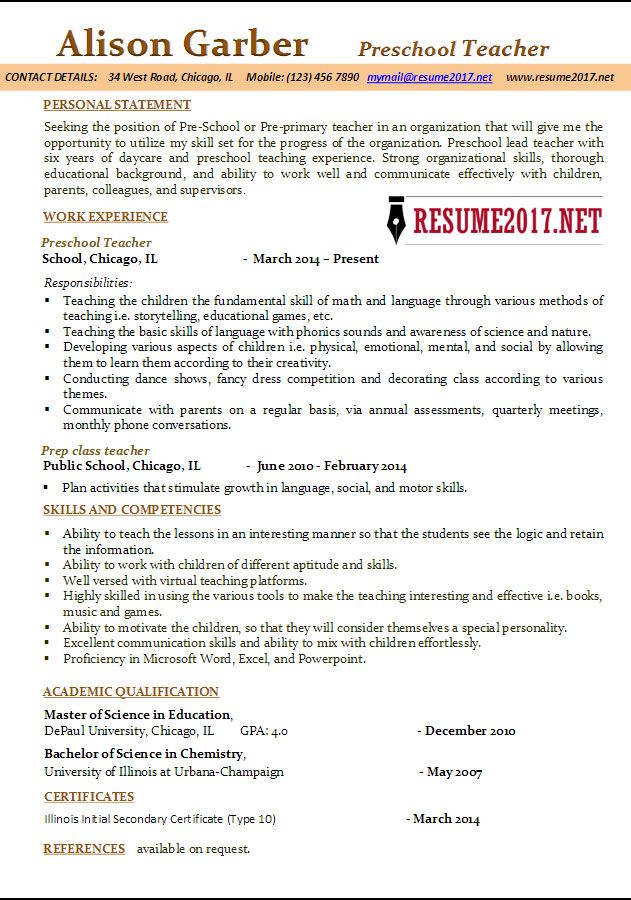 Better hug the baby.
Better hug the baby.
Joking about the problem doesn't help either because the problem is remains.
The child feels the emotions of others, needs support, acceptance and recognition from the parents. Active listening is the ideal tool for this. And to try on the spot to solve, suppress or justify the problem of the child - it's a road to nowhere.
Perhaps the most important thing in communicating with a child in such a situation (and in general in life) is the rejection of the parental position "above". A child is already a person, with his own feelings, desires and will. This is not a doggy training.
CHILD NEEDS SUPPORT. TRYING ON THE SITE TO SOLVE, SUPPRESS OR JUSTIFY HIS PROBLEM IS THE WAY GOING NOWHERE.
Conflict resolution
Conflict is normal. They happen even in the most friendly families. Good conflict resolution is when both parties get what they really want. To do this, the book proposes an algorithm:
To do this, the book proposes an algorithm:
Clarify the conflict situation , identify the stumbling block through active listening. Make it clear that you are open to conflict resolution. First listen to the child, then talk about your side of the problem with the help of "I-messages".
Collect proposals from both sides , do not criticize each separately. Everyone should offer their own solutions. Answer the question "What should we do in this situation?"
Evaluate each proposal and collectively select the best acceptable. Both sides must choose, that is, come to an agreement. In the process, it turns out that one of the parties I wanted something completely different from what I initially stated.
Refine solution , for example, by writing it down on paper and adding clarification points to it.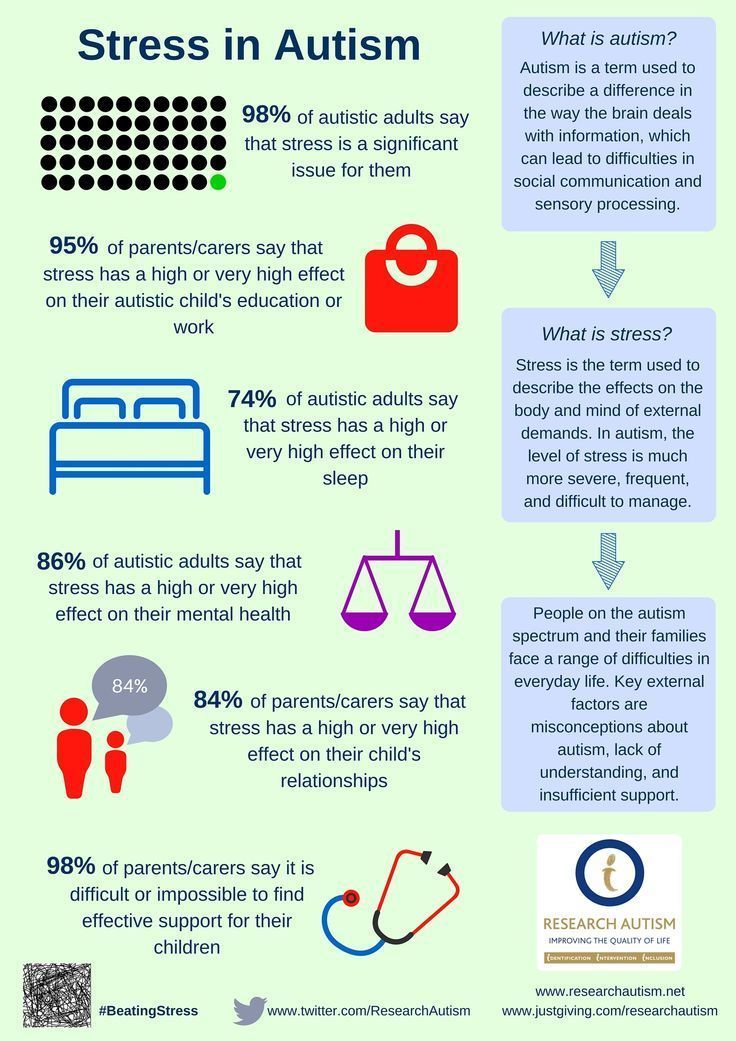 Problem solving is good on paper.
Problem solving is good on paper.
Fulfill the target and check the result so that everything is like agreed.
Perhaps the most important thing here is to listen to all the children involved in the conflict. The more parents listen, the easier them to understand the real problem.
The second is to come to a decision together without taking a dominant position over the child. dominant position humiliates the will and personality of the child. If you give them the opportunity to make their own decisions, you will be surprised how they will act reasonably and honestly.
Transfer of responsibility
I would like to quote a very important phrase from this book. It occurs in the chapter dealing with matters that children do not want to do, and about the guardianship that parents surround them with great love:
GIVING RESPONSIBILITY TO THEM IS THE BIGGEST CARE YOU CAN SHOW TO THEM
“This is a wise concern. It makes the child stronger and more self-confident, and your relationship more calm and joyful.
It makes the child stronger and more self-confident, and your relationship more calm and joyful.
Behind the scenes
We haven't even started talking about discipline and independence, joint activities, conflicts in relationships, punishments and structure of emotions. The book "Communicate with the child. How?" is a treasure trove of stories, examples, techniques and correct thoughts.
It is useful not only for parents. It will help managers and subordinates, junior employees and directors, unemployed, housewives, entrepreneurs and students. It helps to find the hidden child in yourself and learn communicate with him first.
The book is 3 times cheaper at Ozon.
FROM THE EDITOR
Psychologist Lyudmila Petranovskaya has a series of articles about the psychological trauma inflicted on Soviet people The Great Patriotic War: the first post-war generation , second and third.
In a nutshell, the deprivations of the war are predictably and equally imprinted on the post-war generation.